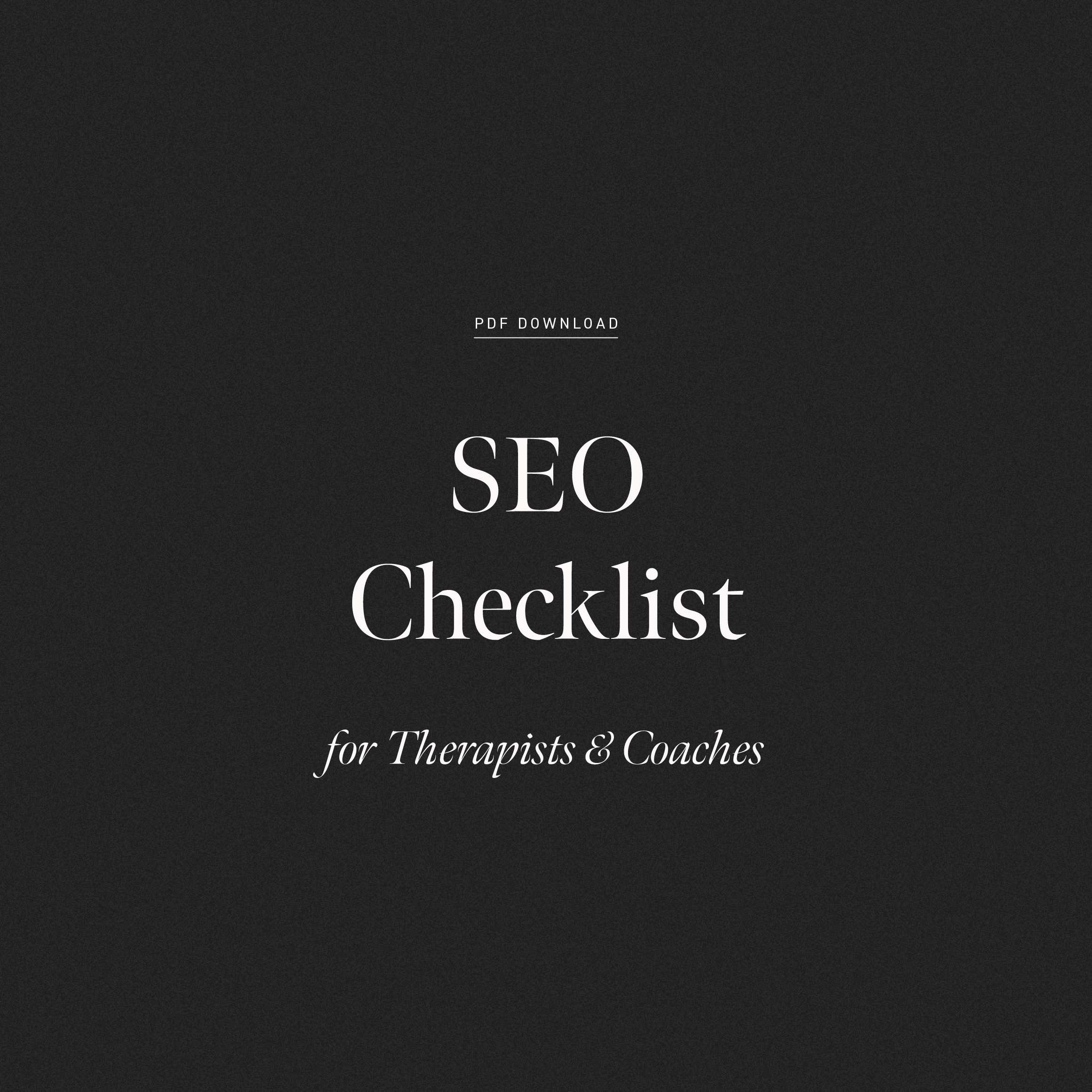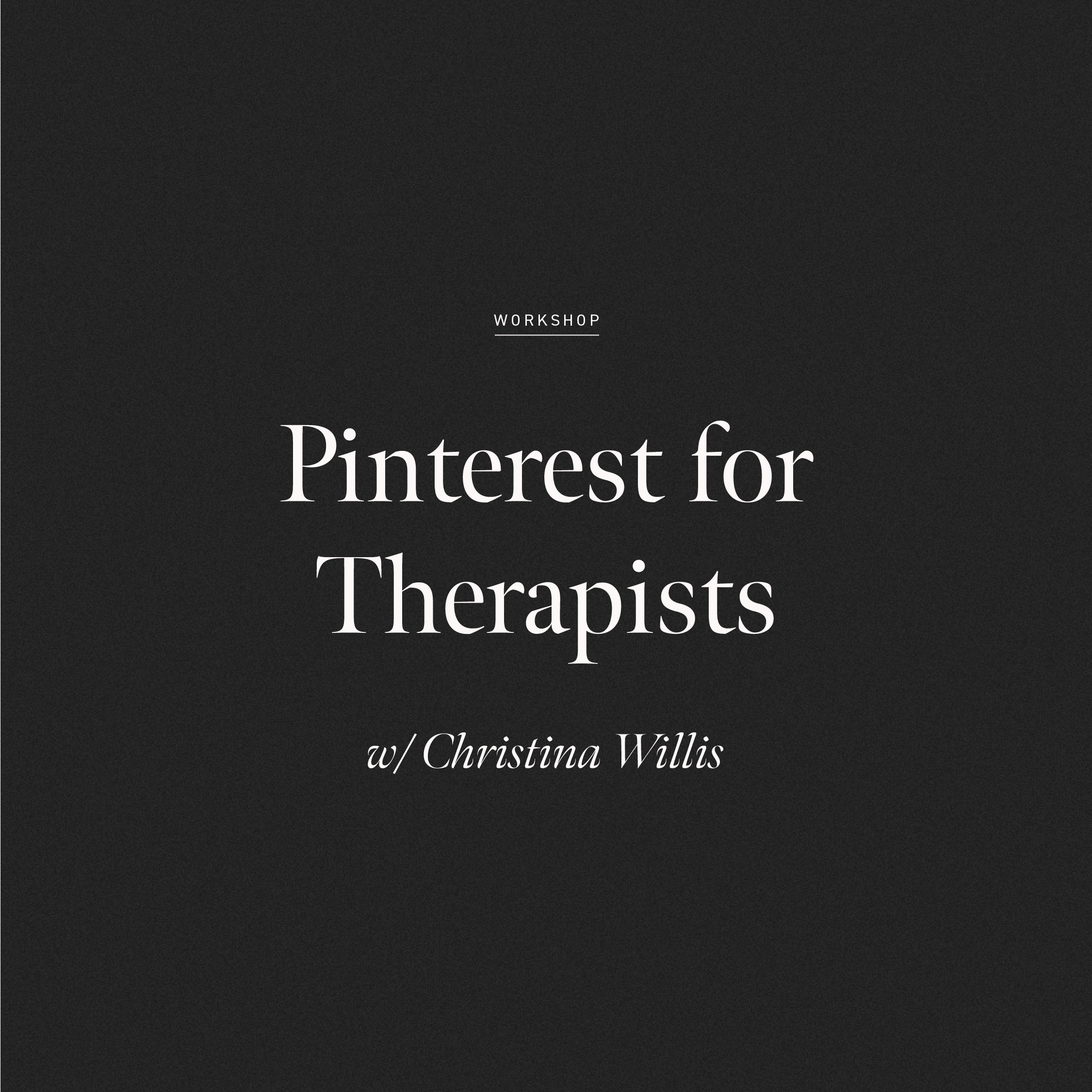Avoiding Marketing Burnout: How to Streamline Your Efforts, Reach More Clients, & Practice Self-Care
You’re exhausted. The thought of planning your Instagram posts for the upcoming week fills you with a surprising amount of dread, and you think, “I hate marketing my practice.” But you need more clients, so you push through the resentment and create some content. While you’re at it, you wonder if you’ll reach more people if you start a Twitter account. At that point, it wouldn’t hurt to post regularly on LinkedIn and Facebook, too, right?
I hear this struggle all too often from the private practice therapists that I work with at Hold Space Creative, and if you’re feeling it too, you’re not alone. While therapists have embraced social media marketing as a viable way to grow their private practices, the constant content creation sets up an environment ripe for burnout.
Pair the 24/7, “always-on” mentality of social media with the already taxing work of being a mental healthcare provider, and you’ve got an unsustainable system.
If you feel yourself headed toward marketing burnout, this post is for you. I’ll help you simplify your marketing efforts, step by step, so you can reach more clients and spend more time doing what you love.
Step one: Start where you are
In order to create a sustainable online marketing system for your private practice, it’s important to take stock of your current situation. Reflect on the past 3-6 months and answer the following questions:
What are the tasks that I do to market my practice online? (Make a list)
Which of these tasks feel enjoyable and rewarding most of the time?
Which of these tasks feel exhausting and anxiety-provoking most of the time?
What are my marketing goals? What am I hoping to accomplish by marketing my practice online?
While online marketing can become overwhelming for all types of business owners, I’ve noticed that therapists tend to burn out from marketing much faster than their entrepreneurial peers in other fields (based on anecdotal observation).
In my opinion, there are two possible reasons this is happening:
1. Marketing feels “salesy” to many therapists. Nobody wants to “sell” counseling; therapists want to empower their clients to make informed decisions about their mental healthcare, and marketing, on the surface, can feel manipulative, coercive, and slimy.
If you’ve been reading my blog for a while, I hope you know by now that marketing doesn’t have to be synonymous with manipulation and coercion. In fact, the most effective kind of marketing is genuine, transparent, and empathetic, especially when it comes to marketing mental health services.
2. Many therapists are accustomed to trading time for money. The amount of work you put in directly correlates with how much you’re “rewarded”; You have a session, you get paid. Naturally, many therapists approach marketing in the same way. But an hour spent on Instagram doesn’t equate to one new client. Spending a month on Twitter doesn’t mean you’ll have a full caseload. Putting energy into anything without getting much in return creates resentment and leads to burnout.
The solution? Stop putting so much energy into systems that aren’t reciprocating.
Too often, therapists spend too much time on marketing tasks that yield minimal or no results, and not enough time developing systems that could yield much bigger results without as much labor. With systems that operate passively, you can establish and maintain stronger boundaries around your time, your energy, and your own mental health.
A couple of definitions before we proceed:
Active Marketing: Marketing that requires action on the part of the business, and requires persistence. Active marketing includes things like networking, email marketing, cold calling, social media interaction, hosting events, and advertising.*
Passive Marketing: Marketing that allows the business to be found when a client/customer has a need. Passive marketing includes things like SEO, directory listings, and blogging/podcasting.*
When you look back at your answers to the questions you answered earlier, how many of your regular marketing tasks would fall in the “active” category? How many would be categorized as “passive”?
I’m willing to bet that if you’re feeling burnt out right now, you’re relying too heavily on active marketing and not enough on passive. Which, as I said, makes sense as therapists are accustomed to trading time for money.
Step two: Set up a passive marketing foundation
To prioritize self-care and develop a sustainable private practice marketing strategy that doesn’t burn you out, I recommend establishing a foundation of passive marketing channels first. Before spending any more time on social media, make sure you have a solid website and SEO strategy.
Must have: A hard-working website
The most foundational piece to any marketing strategy is your website; without a virtual home base, your online connections have nowhere to go. However, merely having a website isn’t enough. Many therapy websites aren’t set up well, and in turn, repel clients; leaving therapy-seekers without the help that they need.
A well-designed, hard-working website will connect with your niche in a genuine way, book new clients for you, sign people up for your email list, and sell products/services on your behalf. But how do you ensure that your website is working hard for you?
A hard-working website has the following elements:
Fast loading on desktop and mobile
Secure (SSL encryption and HSTS enabled)
Aesthetically pleasing, uncluttered design that matches your personality and therapeutic style
Copy that’s easy to understand and connects to your specific niche
A clear path to booking a session / working with you
An email newsletter sign-up
Need help building and writing a better therapy website? My Squarespace website templates and copy templates were specifically designed to fill in the gaps that most therapy websites leave behind and help your marketing run on autopilot.
Get started with a hard-working website today:
Sage
Learn More →
Bridge
Learn More →
Must have: An SEO strategy
To make sure your website connects with new people on autopilot, invest in Search Engine Optimization (SEO). Unlike marketing on social media, SEO allows your website to be found organically, without constant, daily content creation. While it does require setup and maintenance, Google and other search engines will send traffic to your website while you spend your time and energy elsewhere.
Just remember, increased website traffic won’t help you if your website isn’t connecting to folks once they get there. Make sure the elements of a hard-working website that I described above are in place before ramping up your SEO efforts.
Each of our Squarespace templates comes with an SEO checklist to help you start ranking on Google soon after you launch your new website.
Go further with our SEO Checklist:
Bonus: Directory profiles
After you’ve set up a hard-working website and a solid SEO strategy, you may consider joining therapist directories. Since so many therapy-seekers are unsure how to find the right therapist for them, they usually start on directories. Therapy Den, Mental Health Match, Inclusive Therapists, and Choosing Therapy are all great platforms worth checking out.
Side note: for a 4-month free trial of Mental Health Match, enter code HOLDSPACE120 when you sign up.
Bonus: Pinterest
A passive marketing channel that most therapists miss is Pinterest. While most of us know Pinterest as another social media platform, it’s actually more of a search engine that works very similarly to Google. Posting consistent pins that link directly to your website, blog, or podcast puts you in front of people using the platform to search for resources, ideas, and products.
“Consistent” posting on Pinterest is not the same as consistent posting on Instagram or Facebook. Far less pinning needs to happen for high-quality traffic generation than posting/engaging on other platforms.
To illustrate my point, I’ll use my website analytics as an example:
I publish one blog post every month, and for each post, I publish four pins to Pinterest; this takes anywhere from 2-4 hours per month. I’ve been doing this for 2+ years. I’m also active on Instagram almost daily, posting content to my stories and feed multiple times a week. I would estimate that I spend about 8 hours per month creating and posting content to Instagram.
In the last 30 days, 26.2% of my website traffic came from social media; 80.3% of that social media traffic came from Pinterest, while only 13.95% came from Instagram. While this is a snapshot of the last 30 days, this ratio of traffic is consistent, month after month.
To learn more about how to use Pinterest to market your practice, watch this workshop:
Step three: Add active marketing channels as you see fit
As you can see, one of my main passive marketing channels (Pinterest) generates a large chunk of my website traffic with far less work on my part. I continue to engage on Instagram because I enjoy interacting with folks in real-time, but since I have a solid passive foundation, I don’t feel dependent on the performance of my Instagram page.
Since the bulk of my website visitors, clients, and customers discover my business on Google and Pinterest, I can relax when social media algorithms change, or a post doesn’t get many “likes,” or I want to take a break for a few days.
Active online marketing, like social media and email marketing, is definitely worth your time and effort, but recognize that these strategies may be most effective when used as a supplement to an established passive foundation, especially for therapists who are already stretched so thin.
If you’re ready to add active marketing channels to your strategy, but you’re not sure which platforms or avenues to use, ask yourself these questions:
Where does my ideal client spend time online?
What does my ideal client want to learn about right now?
In what way(s) does she/he/they prefer taking in new content?
You don’t have to be on every social media platform. You don’t have to do all the things. Knowing where to focus your energy online is about knowing your ideal client really well. If you need some help with this, check out this post.
Step four: Follow the data, not the FOMO
The allure of a huge social media following is strong, I get it. But remember: your health and wellbeing is more important than follower count. And follower count doesn’t always correlate with a successful business.
When the FOMO (Fear Of Missing Out) kicks in, look at the data. How many hours are you spending on each platform / marketing channel per month? How much traffic is each platform sending to your website? Which platform/channel is giving you the biggest return on investment? Build up your passive marketing foundation so that you can hold stronger boundaries around energy-sucking channels like social media.
Simplify to amplify
While counterintuitive to most therapists, finding ways to do less may actually result in reaching more clients. When your website is set up to connect with potential clients on your behalf, and search engines are easily able to direct folks to your website, you have a self-sustaining system that requires much less mental and emotional energy on your part.
And when you have mental and emotional energy to spare, you can show up more fully for your clients, for your loved ones, and for yourself. Which is the ultimate goal in these turbulent times.








